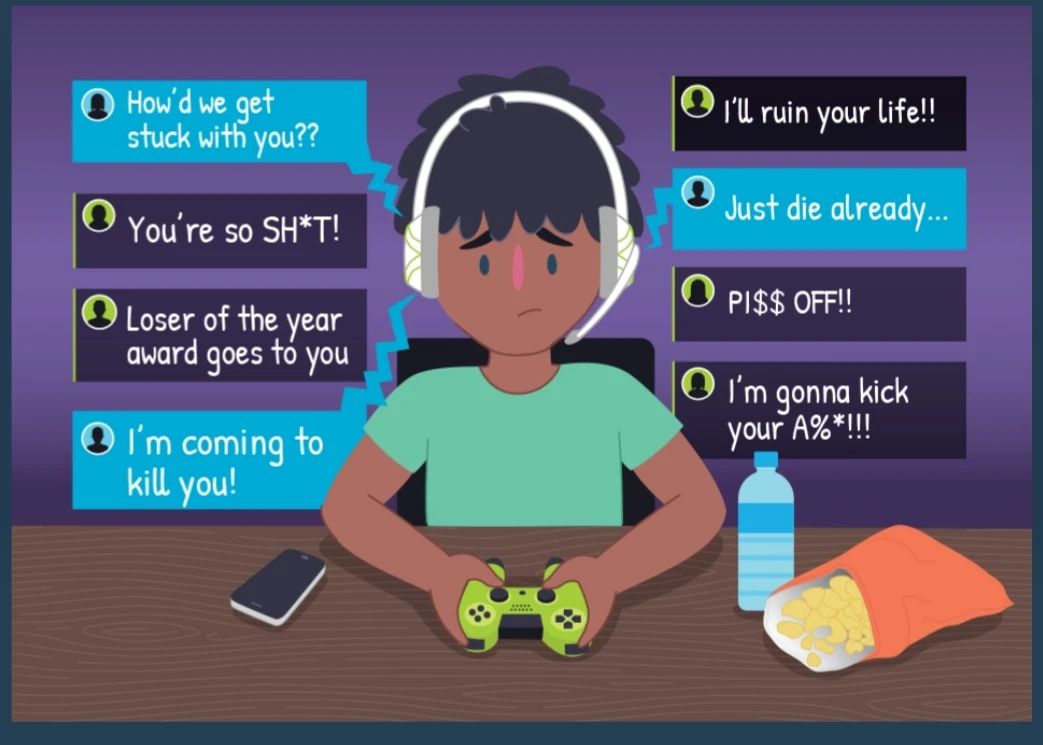Cyber Bullying

Cyberbullying or cyberharassment is a form of bullying or harassment using electronic means. Cyberbullying and cyberharassment are also known as online bullying. It has become increasingly common, especially among teenagers, as the digital sphere has expanded and technology has advanced. Cyberbullying is when someone, typically a teenager, bullies or harasses others on the internet and in other digital spaces, particularly on social media sites. Harmful bullying behavior can include posting rumors, threats, sexual remarks, a victims' personal information, or pejorative labels. Bullying or harassment can be identified by repeated behavior and an intent to harm. Victims of cyberbulling may experience lower self-esteem, increased suicidal ideation, and a variety of negative emotional responses including being scared, frustrated, angry, or depressed. Awareness in the United States has risen in the 2010s, due in part to high-profile cases. Several US states and other countries have passed laws to combat cyberbullying. Some are designed to specifically target teen cyberbullying, while others extend from the scope of physical harassment. In cases of adult cyberharassment, these reports are usually filed beginning with local police. The laws differ by area or state. Research has demonstrated a number of serious consequences of cyberbullying victimisation. Specific statistics on the negative effects of cyberbullying differ by country and other demographics. Internet trolling is a common form of bullying that takes place in an online community in order to elicit a reaction or disruption, or simply just for someone's own personal amusement. Cyberstalking is another form of bullying or harassment that uses electronic communications to stalk a victim; this may pose a credible threat to the victim. Not all negative interaction online or on social media can be attributed to cyberbullying. Research suggests that there are also interactions online that result in peer pressure, which can have a negative, positive, or neutral impact on those involved.

The most common places where cyberbullying occurs are:
¬Social Media, such as Facebook, Instagram, Snapchat, and Tik Tok
¬Text messaging and messaging apps on mobile or tablet devices
¬Instant messaging, direct messaging, and online chatting over the internet
¬Online forums, chat rooms, and message boards, such as Reddit
¬Email
¬Online gaming communities

Bullying, including cyberbullying—causes significant emotional and psychological distress. Just like any other victim of bullying, cyberbullied kids experience anxiety, fear, depression, and low self-esteem. But targets of cyberbullying also experience some unique consequences and negative feelings. Over half of adolescents and teens have been bullied online, and about the same number have engaged in cyber bullying. More than 1 in 3 young people have experienced cyberthreats online. Over 25 percent of adolescents and teens have been bullied repeatedly through their cell phones or the Internet. The top 3 countries where cyberbullying is the most prevalent are India, Brazil, and the United States, but this is a common occurrence everywhere. Victims can suffer because of cyberbullying long after it ends. Being bullied can lead to a lifetime of low self-esteem. This may cause chronic fatigue, insomnia and poor performance in school or at work. The result of a cyberbullying experience, long or short term could also result in anxiety, depression, and fear which can cause decreased school attendance, strained relationships with friends, extreme embarrassment, school relocation, drug use and has even led to suicide.



Very apt topic... Well articulated
ReplyDelete